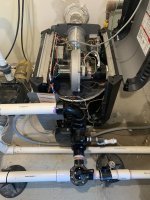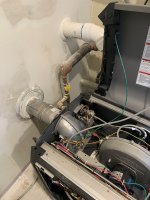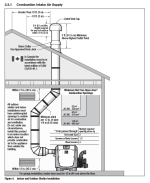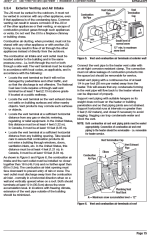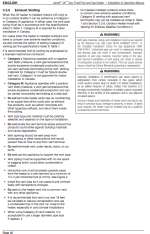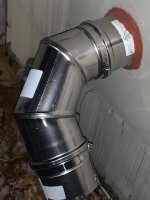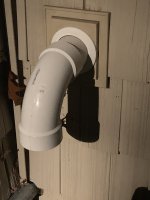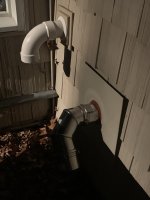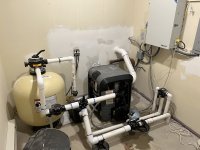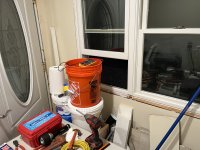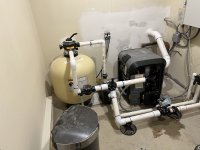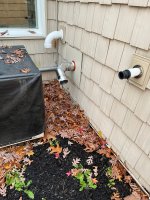My Jandy JXI 400 is about a year old makes a whining sound when heating starts - the noise starts seconds after the burner lights. The noise is a fluctuating whining sound. Removed the manifold, tested the thermal regulator - it opens at 120 degrees F. The inlet and outlet tubes are clear of obstruction and calcification. I tested the gas pressure at inlet to be 7.4 inches of WC. When the unit lights it goes down to 4.5 inches of WC. No error codes and the pool heats. What is could be causing the whining sound? Any help would be greatly appreciated. The unit is indoors, gets its combustible air from outside with the intake air kit. The combusted air venting is approximately 3 feet directly out of the pump room.
Also are there any specs on torquing the manifold nuts on this unit? I can't find the specs anywhere.
Also are there any specs on torquing the manifold nuts on this unit? I can't find the specs anywhere.


